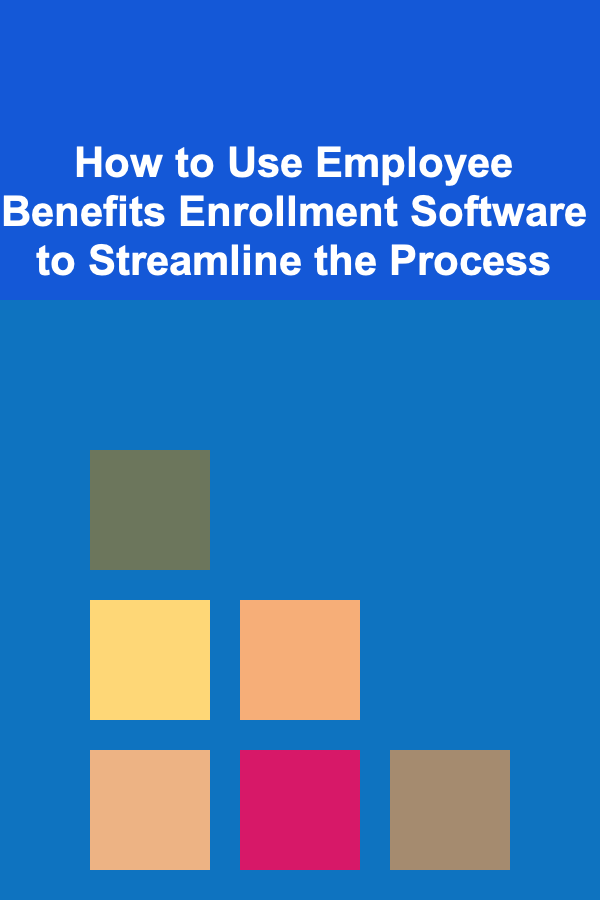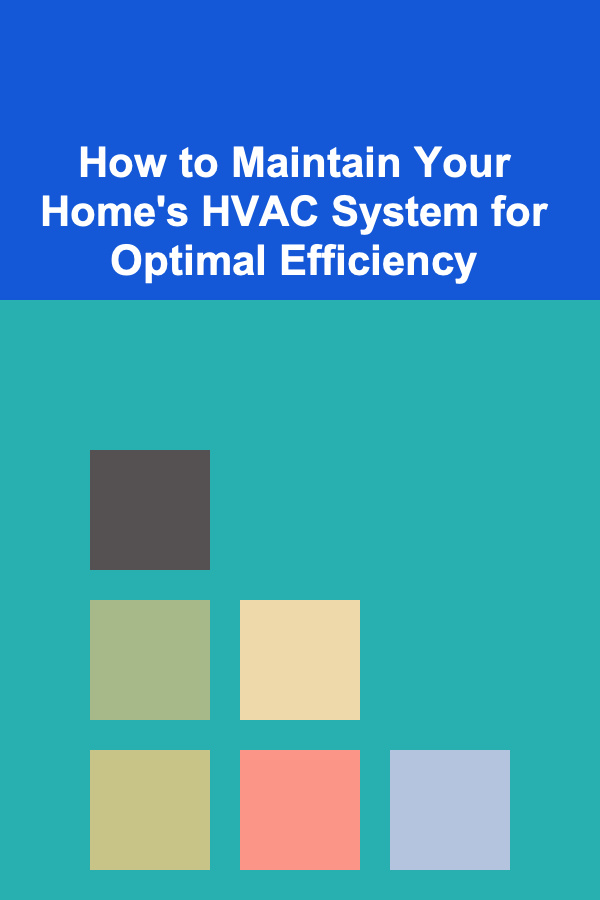
How to Use Employee Benefits Enrollment Software to Streamline the Process
ebook include PDF & Audio bundle (Micro Guide)
$12.99$5.99
Limited Time Offer! Order within the next:

Employee benefits are one of the most important aspects of an organization's compensation package. The way these benefits are enrolled, tracked, and managed can significantly impact employee satisfaction and the overall efficiency of human resources (HR) teams. As companies grow and offer more diverse benefits packages, the manual process of benefits enrollment can become cumbersome and prone to error.
Employee benefits enrollment software is designed to streamline this process, making it easier for both employees and HR professionals to manage benefits offerings. In this guide, we will explore how to effectively use employee benefits enrollment software to streamline the entire process and enhance the experience for everyone involved.
Understanding Employee Benefits Enrollment Software
Employee benefits enrollment software is a tool that enables employees to select, manage, and modify their benefits packages during the open enrollment period. These tools usually integrate with other HR systems such as payroll, employee records, and compliance management systems to provide a seamless and efficient process for benefits administration.
The software typically provides employees with a user-friendly interface to view available benefits options, compare different plans, and make selections based on their needs. HR teams, on the other hand, benefit from automated tracking, reporting, and administrative tools that simplify the management of benefits data.
Key Features of Benefits Enrollment Software
- Self-Service Portal for Employees: Employees can access their benefits information, make selections, and update personal details without relying on HR staff.
- Customizable Benefits Packages: Employers can configure a variety of plans such as health insurance, retirement plans, and wellness programs, offering flexibility to meet the diverse needs of their workforce.
- Automatic Notifications and Reminders: The software sends automatic reminders to employees about open enrollment periods, deadlines, and important plan changes.
- Integration with Payroll and HR Systems: This ensures that the benefits selection data flows smoothly into the payroll system for accurate deductions and records.
- Compliance Tracking: The software can help ensure that the organization complies with legal requirements and industry regulations, such as those set forth by the Affordable Care Act (ACA) or ERISA (Employee Retirement Income Security Act).
- Real-Time Reporting and Analytics: HR teams can monitor enrollment progress, track participation rates, and generate reports for future planning.
Step-by-Step Guide to Using Benefits Enrollment Software
Step 1: Prepare Your Employee Benefits Information
Before launching the benefits enrollment process, ensure that all benefits data is up to date and easily accessible. This includes details about the health plans, retirement options, wellness programs, and other benefits offered by the company.
You should also ensure that the software is configured with the right benefit options for employees to choose from, including:
- Health, dental, and vision insurance plans
- Retirement savings plans (401k, pensions, etc.)
- Paid time off (PTO) policies and sick leave
- Life insurance and disability benefits
- Wellness programs (e.g., gym memberships, counseling)
- Employee Assistance Programs (EAPs)
Once this data is organized and uploaded into the system, it's time to move on to the next step.
Step 2: Set Up the Benefits Enrollment Portal
Most benefits enrollment software will have a customizable portal that allows you to tailor the look and feel to your organization's brand. The employee-facing portal should be easy to navigate and offer clear instructions to help them make their benefit selections.
Here are a few key considerations during setup:
- User-Friendly Interface: Ensure the portal is intuitive, so employees can easily select their benefits and understand the available options.
- Detailed Benefits Descriptions: Provide comprehensive but easy-to-understand descriptions of each benefit plan, including costs, coverage options, and eligibility criteria.
- Interactive Tools: Offer tools that allow employees to compare different plans side by side (e.g., health insurance options), calculate potential savings, or estimate out-of-pocket expenses for various benefits packages.
- Help and Support Options: Include links to FAQs, benefits guides, and customer support channels in case employees need help during the enrollment process.
Step 3: Communicate with Employees
Effective communication is key to a successful benefits enrollment period. It's important to notify employees ahead of time about the upcoming enrollment period and provide them with all necessary information. This can include:
- Pre-Enrollment Communication: Send out informational materials (via email or through the software itself) that explain the benefits available, how the enrollment process works, and any changes to the offerings from the previous year.
- Open Enrollment Reminders: Set up automated reminders through the software to notify employees about the start and end dates of the open enrollment period.
- Support for Decision Making: Offer employees the opportunity to ask questions or schedule consultations with HR or benefits advisors if needed. This can help employees feel more confident in their choices.
Step 4: Enable Employees to Make Selections
During the open enrollment period, employees can log into the enrollment portal and review their benefits options. Here's how to ensure that the process goes smoothly:
- Easy Navigation: Ensure employees can easily navigate between benefits types, view their selections, and return to make edits if necessary.
- Automatic Updates: Allow employees to easily update their personal information (e.g., dependents, address) that may affect their benefits selections.
- Review and Confirm: Provide a summary screen at the end of the selection process where employees can review their benefits choices before confirming their selections.
Step 5: Automate Data Integration and Payroll Adjustments
Once employees have made their selections, the software should automatically send their enrollment data to the relevant systems, such as payroll and HR management tools. This eliminates the need for manual data entry and reduces the risk of errors.
Ensure the following integration steps are in place:
- Payroll Deduction Integration: The software should automatically calculate the employee's benefit deductions and update payroll systems accordingly, ensuring accuracy.
- Employee Records Update: The system should update the employee's records to reflect the new benefits selections, including adding dependents or changing coverage levels.
- Vendor Communication: In cases where external vendors manage certain benefits (e.g., health insurance companies or retirement plan administrators), the software should be able to send the necessary data to them in real-time.
Step 6: Track Progress and Monitor Enrollment
HR professionals can use the reporting features in the benefits enrollment software to track employee participation rates, monitor which benefits are most popular, and identify any gaps in coverage. Real-time reporting can also help you:
- Track Compliance: Ensure that your organization is meeting all regulatory requirements, such as those related to the ACA.
- Monitor Employee Engagement: Evaluate how engaged employees are in the process and identify any challenges they may be facing (e.g., incomplete selections or common questions).
- Generate Reports: HR can create reports that summarize benefits participation, which can be valuable for budgeting and decision-making in the future.
Step 7: Provide Post-Enrollment Support
After the enrollment period has ended, it's important to provide employees with confirmation of their benefits selections and any next steps. The software should automatically send confirmation emails, summarizing their choices and outlining the effective date of coverage.
HR can also:
- Provide Access to Benefits Cards: Ensure that employees receive any necessary benefits cards (e.g., health insurance cards) or details about their coverage.
- Offer Follow-Up Resources: Continue offering employees resources for understanding their benefits, such as guides to help them navigate the claims process or information about using health savings accounts (HSAs).
Benefits of Using Benefits Enrollment Software
- Increased Efficiency: Automating the benefits enrollment process significantly reduces manual work for HR teams and minimizes errors in data entry.
- Better Employee Experience: Employees appreciate the convenience of a self-service portal, which allows them to make informed decisions and complete the process at their own pace.
- Cost Savings: By streamlining the process, companies can reduce administrative costs associated with managing benefits manually, such as paper processing and phone calls.
- Improved Compliance: Benefits enrollment software helps ensure compliance with ever-changing regulations, such as ACA reporting requirements and data protection laws.
- Better Decision-Making: The software's reporting and analytics tools allow HR to make data-driven decisions about benefits offerings, helping companies tailor packages that best meet employee needs.
Conclusion
Using employee benefits enrollment software is an effective way to simplify and optimize the benefits management process for both HR professionals and employees. By following the steps outlined in this guide, your organization can streamline the enrollment process, improve employee satisfaction, and ensure compliance with regulations, all while reducing the administrative burden on your HR team. With the right technology in place, employee benefits enrollment can become a seamless and positive experience for everyone involved.
Reading More From Our Other Websites
- [Personal Care Tips 101] How to Select a Dry Shampoo for Curly Hair
- [Personal Care Tips 101] How to Avoid Common Blush Application Mistakes
- [Home Staging 101] How to Find the Best Home Staging Books to Elevate Your Property's Value
- [Reading Habit Tip 101] Simple Strategies to Double Your Book Count This Year
- [Personal Finance Management 101] How to Improve Your Credit Rating in 6 Months
- [Personal Care Tips 101] How to Cut Back on Sodium for Better Health
- [Survival Kit 101] How to Stock a Survival Kit for Emergency Car Breakdowns in Remote Deserts
- [Personal Care Tips 101] How to Prevent Skin Damage with the Right Facial Scrub Technique
- [Organization Tip 101] How to Organize a Potluck Dinner Without Stress
- [Home Renovating 101] How to Choose the Perfect Paint Colors for Your Interior

How to Host a Themed Costume Party at Home
Read More
How to Maintain Your Home's HVAC System for Optimal Efficiency
Read More
How to Prepare Wholesome & Delicious Grain Bowls
Read More
Mastering Public Speaking for Leaders
Read More
Easy & Delicious Breakfasts: A Comprehensive Guide
Read More
How to Use AI Tools to Enhance Your Voice Over Career
Read MoreOther Products

How to Host a Themed Costume Party at Home
Read More
How to Maintain Your Home's HVAC System for Optimal Efficiency
Read More
How to Prepare Wholesome & Delicious Grain Bowls
Read More
Mastering Public Speaking for Leaders
Read More
Easy & Delicious Breakfasts: A Comprehensive Guide
Read More